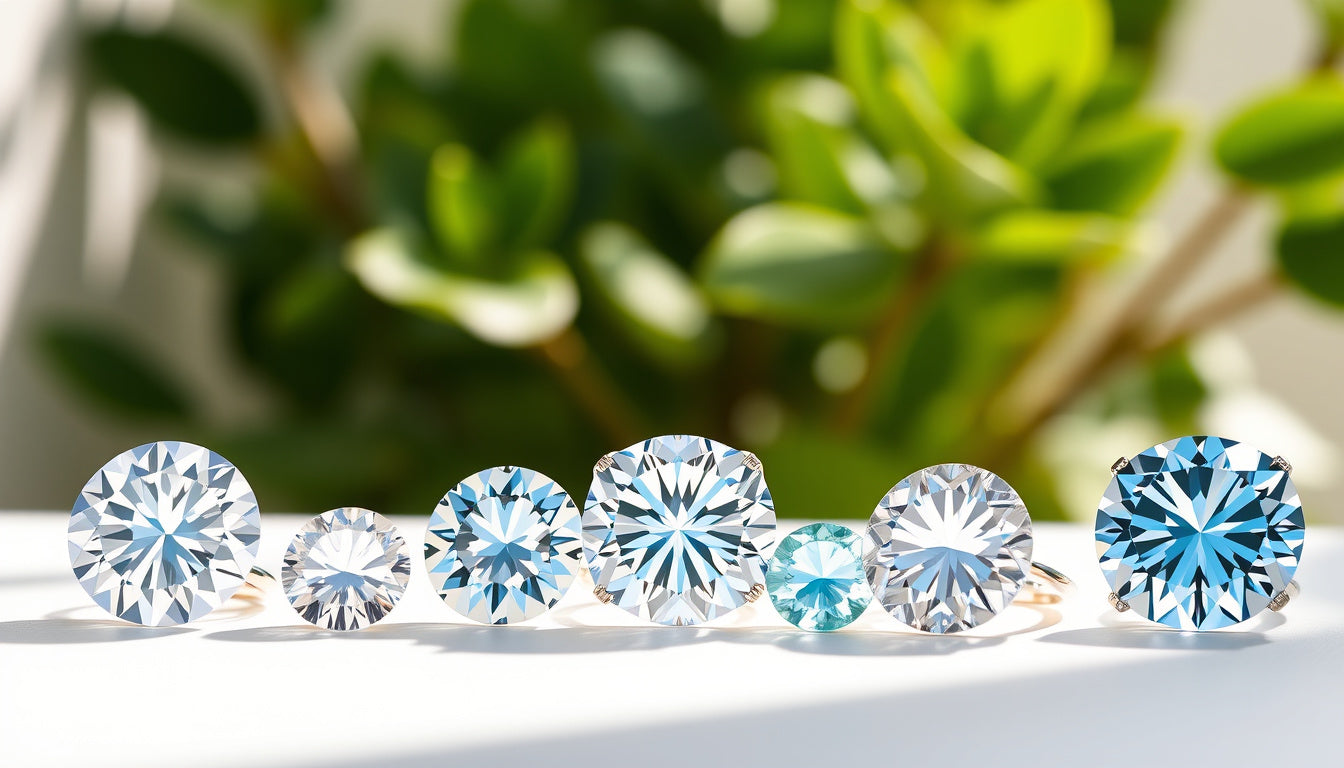In a world increasingly focused on sustainability and ethical practices, the demand for conflict-free diamond alternatives has surged. Consumers are now more aware than ever about the origins of their purchases, especially when it comes to jewelry. This article delves into the importance of conflict-free diamonds, explores popular alternatives, and provides guidance on choosing ethical jewelry that aligns with your values. Join us on this journey to discover stunning and responsible choices for your next jewelry piece.

Key Takeaways
- Conflict-free diamonds are sourced without causing harm to communities or the environment.
- Popular alternatives to conflict-free diamonds include lab-grown diamonds, moissanite, and gemstones, each with unique pros and cons.
- Lab-grown diamonds are chemically identical to mined diamonds but often more affordable and eco-friendly.
- Choosing ethical jewelry involves understanding personal values and the sourcing practices of different jewelers.
- Look for certifications and transparency in the supply chain to ensure your jewelry aligns with ethical standards.
Understanding Conflict-Free Diamonds and Their Alternatives
In recent years, the jewelry industry has witnessed a significant shift towards ethical sourcing, making conflict-free diamonds a popular choice for conscientious consumers. A conflict-free diamond denotes a gem that is sourced without funding violence or human rights abuses, primarily in war-torn regions. However, the growing demand for transparency has led to the emergence of various conflict-free diamond alternatives that provide both ethical choices and unique beauty. These alternatives include lab-grown diamonds, which are chemically identical to their natural counterparts but created in controlled environments, thus ensuring an eco-friendly and ethical production process. Additionally, gemstones such as moissanite and cubic zirconia serve as gorgeous alternatives, offering a different aesthetic while also being conflict-free. Understanding the options available not only helps consumers make informed choices about their jewelry but also promotes ethical practices within the industry, making a positive impact on global communities.
Popular Conflict-Free Diamond Alternatives: Pros and Cons
When it comes to choosing a conflict-free diamond alternative, various options have gained popularity for ethical, environmental, and budgetary considerations. Options such as lab-grown diamonds and gemstones like moissanite and sapphires offer alluring substitutes with their own set of advantages and disadvantages. Lab-grown diamonds, for instance, possess the same physical and optical properties as natural diamonds, yet their production methods ensure they are conflict-free, often at a fraction of the price. However, they may lack the traditional allure some consumers associate with natural stones. Moissanite, a gemstone made of silicon carbide, exhibits impressive brilliance and durability, often mimicking the look of a diamond while being more affordable, but some may argue it lacks prestige compared to a traditional diamond. Lastly, sapphires — a timeless choice — not only come in diverse colors but also boast a rich history and cultural significance, though finding certified effectiveness in their mining practices can be more challenging. Ultimately, while each conflict-free diamond alternative presents unique benefits and drawbacks, they all provide conscientious consumers with beautiful options free from the ethical concerns linked to natural diamond mining.
'The greatest threat to our planet is the belief that someone else will save it.' – Robert Swan

How to Choose Ethical Jewelry That Aligns with Your Values
When it comes to choosing ethical jewelry, particularly if you're in the market for a conflict-free diamond alternative, it's essential to consider several factors that align with your personal values. Start by researching brands that are transparent about their sourcing practices; look for labels that are certified by organizations dedicated to ethical mining and production. Additionally, explore options such as lab-grown diamonds or alternative gemstones, which often have a significantly lower environmental impact and support fair labor practices. Pay attention to the supply chain—many companies now provide detailed information about where and how their materials are sourced. By prioritizing these elements, you can ensure your jewelry is not just beautiful, but also a meaningful reflection of your commitment to ethical stewardship.

